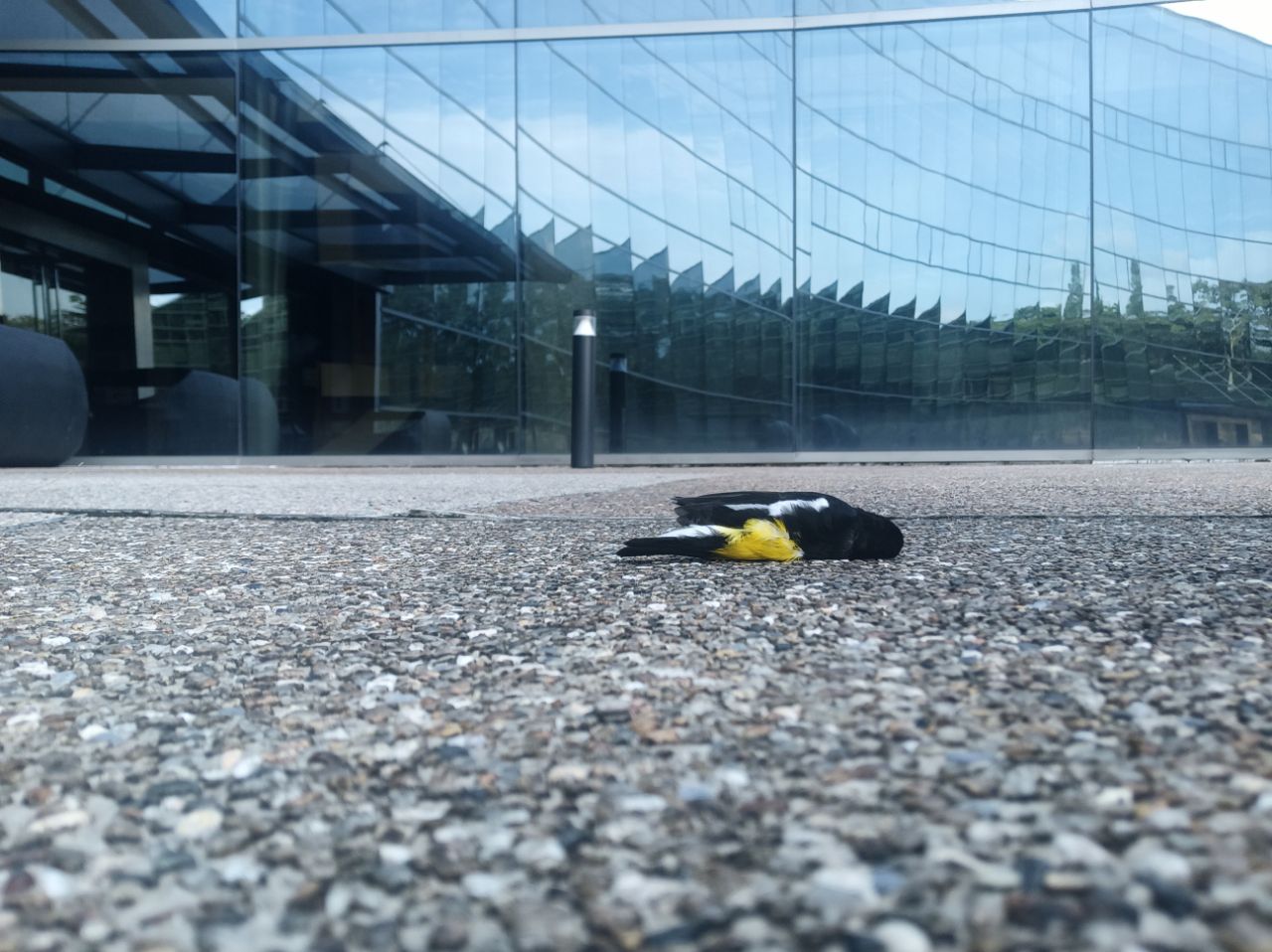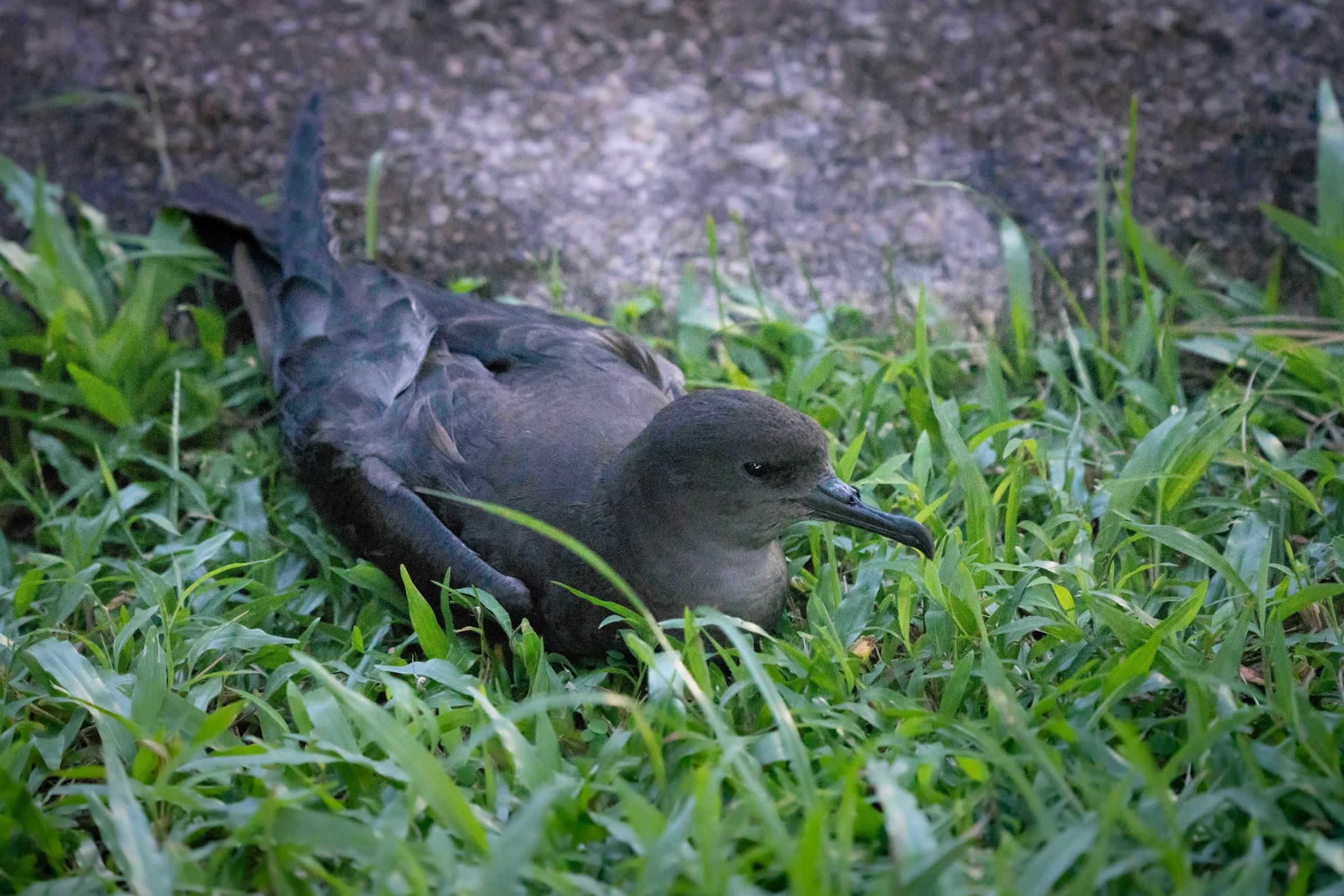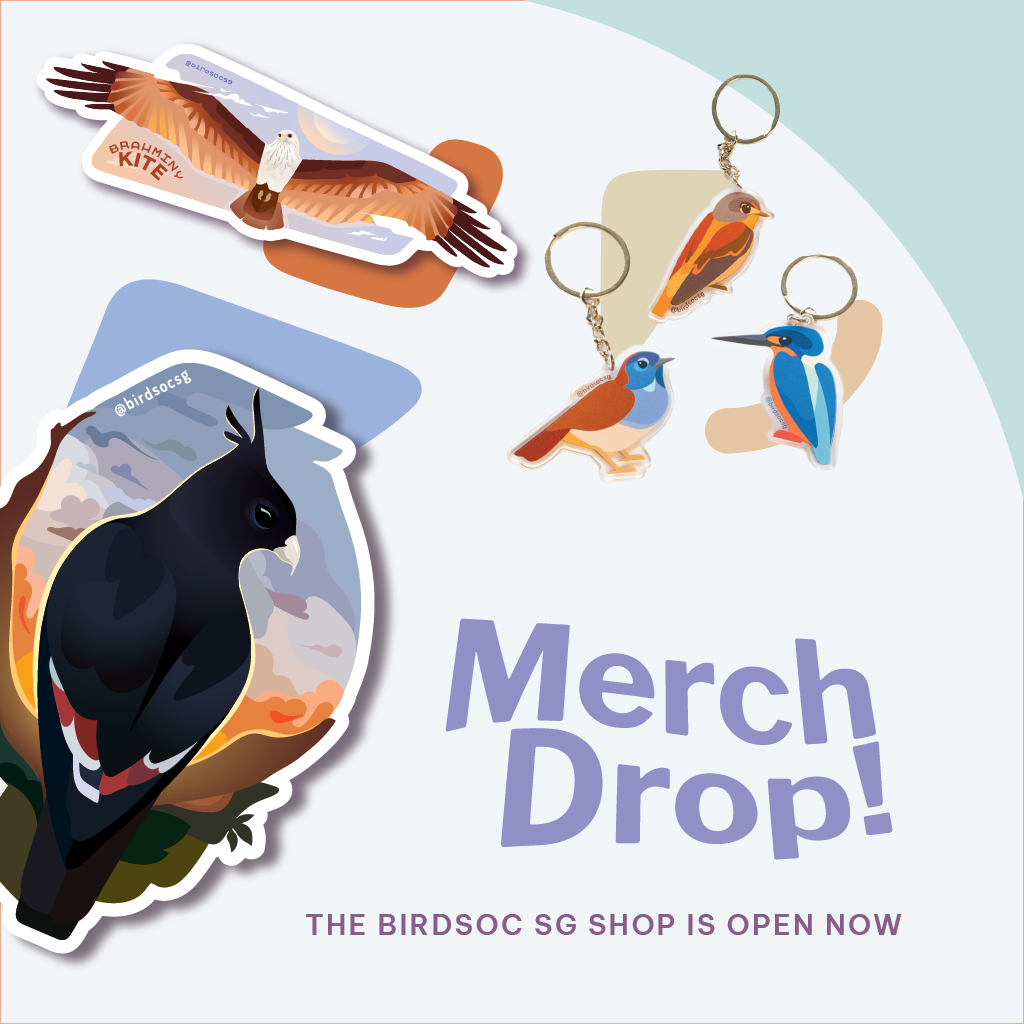- Dead birds: Contact Lee Kong Chian Natural History Museum’s dead bird hotline at +65 98764997 (WhatsApp) or @deadbirdhotline (Telegram) with 1) Date and time you found the bird; 2) Location (GPS coordinates if possible); 3) Photos for species identification purposes.
- Injured birds: National Parks Board Animal Response Centre at 1800 476 1600 (24 hour hotline) or ACRES Wildlife Rescue Hotline on 97837782 (available from 7am to 1am daily)
Billions of birds migrate across the world every year. Some just make short distance movements, while others traverse across vast distances for days without stopping. A proportion of these birds fail to make it to their final destination, either due to natural causes (e.g. exhaustion) or building collisions (e.g. inability to recognise and avoid man-made structures, blinded by lights, etc). Migratory species are not the only victims of collisions. Oftentimes, resident birds that are either undergoing post-breeding dispersal, or are simply searching for food, end up cold on the floor too.
The death of these birds can tell us many things. Researchers can attempt to figure out the cause of death, and with sufficient data, can even try to map out the collision hotspots in an attempt to prevent future cases. DNA can be harvested from these samples too, propelling genomic work for species that might otherwise be extremely difficult to find in the field. However, finding such carcasses is an extremely difficult task, and a targeted search for such samples in Singapore is generally unviable. Researchers are heavily reliant on citizen scientists to report such cases.

When you happen to encounter any dead bird in Singapore, we would like to request that you get in touch with the Lee Kong Chian Natural History Museum’s dead bird hotline at +65 98764997 (WhatsApp) or @deadbirdhotline (Telegram), or Dr. Tan Yen Yi, the Birds Curator, at yenyi.tan@nus.edu.sg for a quicker response.
In your message, please include the following information:
- Date and time you found the bird;
- Location (GPS coordinates if possible);
- Photos for species identification purposes. This also helps aid in the museum’s prioritisation of resources to arrange for its collection.
If you are able to temporarily hold on to the carcass, we recommend storing the carcass by:
- Wrapping up the bird in some tissue paper or newspaper;
- Placing the wrapped bird in a plastic bag;
- Keeping it in a cool, dry place, away from direct sunlight. The colder, the better. Storing it in a freezer is best.
If you need to leave the location but are unable to keep the carcass, it will be great if you could place it under a nearby vegetation or shelter and cover it with something until someone from the museum is able to collect it. This will decrease the chances that the precious sample might be damaged by the weather, or permanently disposed.
Sometimes, the collision impact might be weak enough that the birds survive. Separately, birds can also get injured for a myriad of reasons such as attacks from other animals, fatigue from migration, and falling out of the nest.

When you encounter such birds, it is first important to determine whether the bird really needs our help or not; not all birds on the floor require human intervention. Birds that just fledged from their nest are very frequently seen seemingly helpless on the floor, but they are actually right in their element. The best thing we should do when encountering such birds is to keep a distance from them and, if necessary, intervene if anthropogenic threats (such as vehicles or stray cats) are endangering them. Some signs of the bird requiring help include: the bird is not sitting/standing upright (it is not normal for birds to be lying on their back); obvious external injury (broken leg, wing, bleeding), unable to fly straight, heavy breathing with open mouth when the bird is not observed to be exerting any effort, droopy eyes with head hung low. If you encounter such birds, contact the National Parks Board Animal Response Centre at 1800 476 1600 (24 hour hotline) or ACRES Wildlife Rescue Hotline on 97837782 (available from 7am to 1am daily). Both organisations have extensive experience in rehabilitating injured wild birds. If you need to temporarily house the bird, place them in a dark box lined with newspaper that is big enough for them. It is important not to attempt to rescue these birds by yourself, as that can worsen the situation and potentially even cause injury to both the bird and yourself.
The hobby that we pursue as birdwatchers can go a long way in saving many of the feathered animals around us that could silently require our help. Furthermore, there is a huge potential for members of the public, even non-birders, to contribute to science and conservation simply by reporting these cases of bird deaths and injuries. The next time you come across any such birds, please remember this post, and please also share this knowledge with your family and friends!
